My moist, tender Lemon Layer Cake is made with REAL lemon flavor and no artificial ingredients or extracts! Frost it with a fluffy, light lemon buttercream frosting or go the extra mile and fill it with a layer of fresh lemon curd in the middle to really amp up the lip-puckering citrus quotient. It’s like sunshine in a slice of cake!
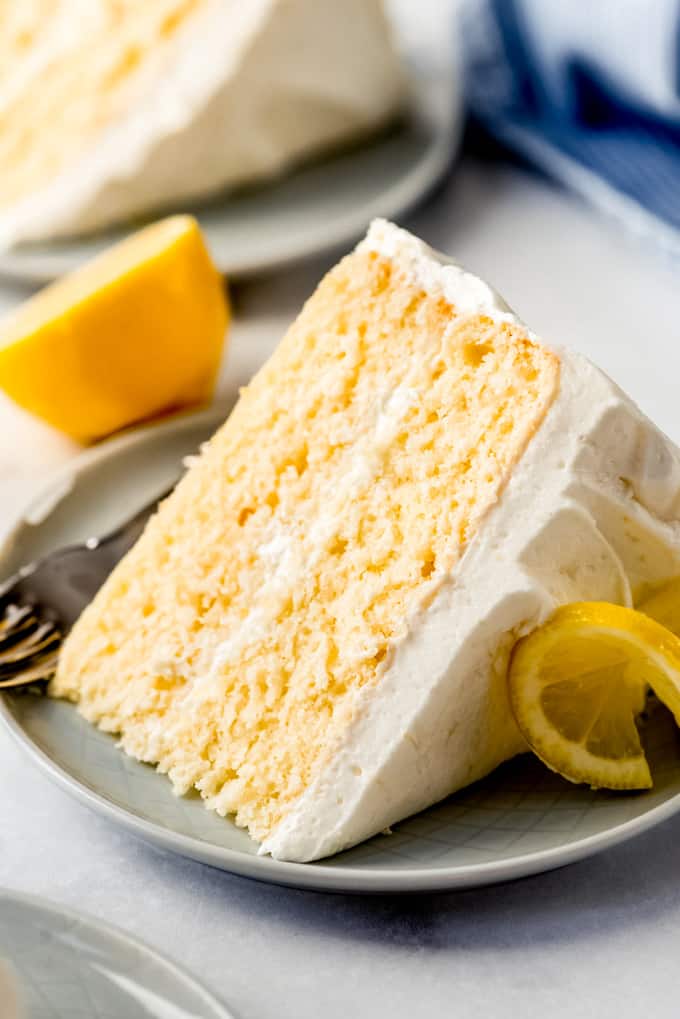
Spring hits and I’m all about the lemon desserts all season long and on through the summer! I love a good tart, lemon treat and have shared many of my favorites on here! Don’t miss my Lemon Meringue Pie, Fresh Lemon Ice Cream, or my Lemon Macarons.
Table of Contents
If you have been looking for a light, fluffy, made-from-scratch lemon cake, you’re in the right spot. This one is definitely a keeper with it’s moist crumb and all-natural lemon flavor that doesn’t rely on lemon extract or pudding mixes for a citrus boost. Instead, we’re making the most of fresh lemon juice in both the cake and the frosting, as well as plenty of lemon zest, which packs the biggest lip-puckering lemony punch!
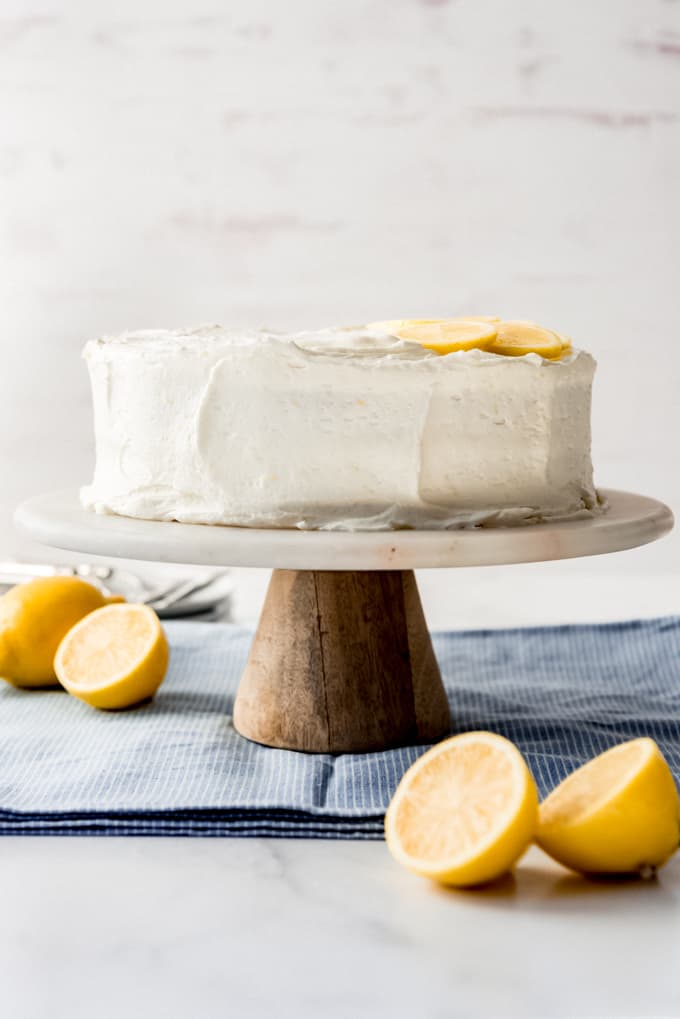
Sweet and tart, made with fresh squeezed lemon juice and plenty of lemon zest, this cake is one you can enjoy all year round, although it’s perfect for Easter dessert or Mother’s Day. The weather starts to warm up and blossoms start to pop out, and I find myself craving bright, sunny flavors like lemon for a treat!
I wanted a simple lemon cake that was light and airy, with a soft, fluffy crumb. These layers are thick enough that you could even carefully slice them in half for a 4-layer cake. It has a wonderful tangy flavor thanks to the addition of buttermilk, which also keeps the cake nice and moist.
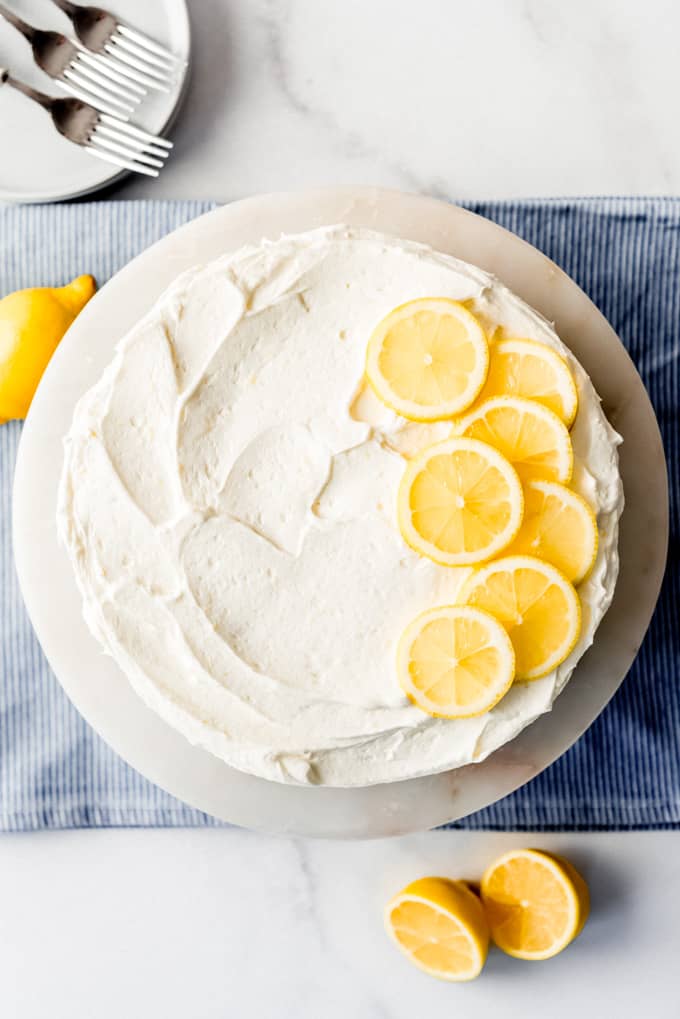
You are welcome to fill it with a layer of storebought or homemade lemon curd, or spread a layer of the bright yellow sunshine on top of the cake for decoration as much as for flavor. But I made sure the cake itself could stand alone in its lemon-packing power without needing lemon curd to carry the day.
For decoration, I decided to keep things a little more rustic by casually spreading the frosting around and not worrying about perfectly smooth sides or piping swirls of frosting on top, although you can certainly go that route if you choose! I did go ahead and arrange some thinly sliced lemons right on top though for visual impact.
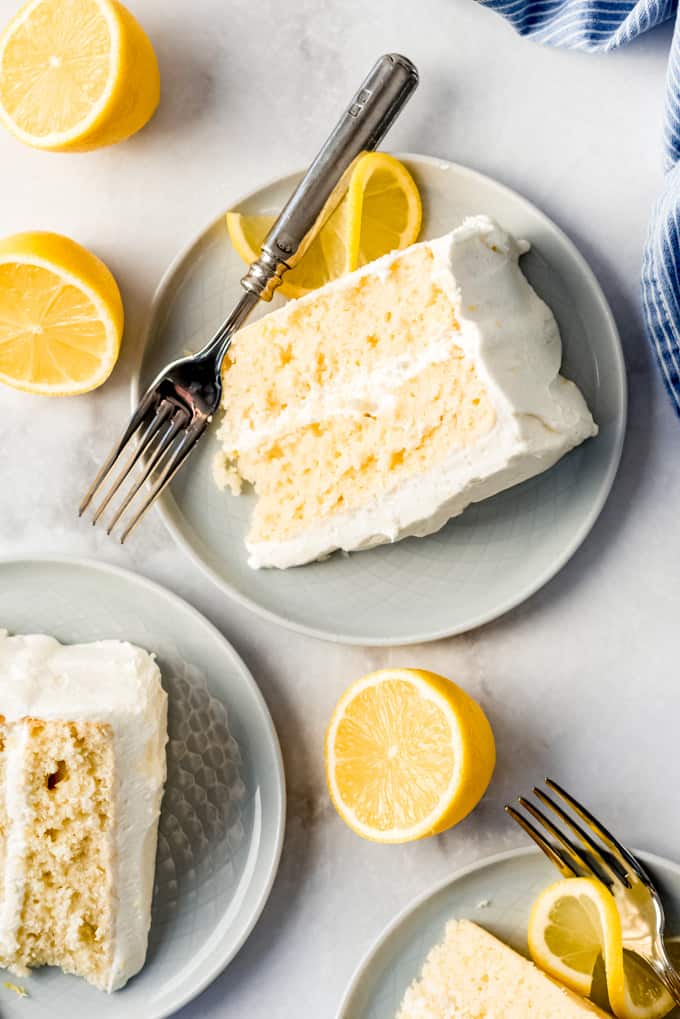
Homemade Lemon Cake Ingredients
- Flour: Although I usually recommend cake flour in most of my cake recipes, this is one where I think all-purpose flour works just as well and it’s more common in most homes anyway. I feel like it stands up to the extra acid from the lemon juice in the batter than cake flour does.
- Sugar: Granulated sugar goes into the batter to make it perfectly sweet, while powdered sugar is beaten with butter, lemon juice, and cream to make the lemon buttercream frosting.
- Lemons: Depending on the size of your lemons you may need 4-6 of them. Be sure to always zest the lemons BEFORE juicing. It’s almost impossible to zest squeezed out lemons and this cake just won’t taste the same without the zest, which I think does a bigger job of contributing to the flavor than the juice does.
- Butter: Sometimes I will use oil or a combination of butter and oil in my cake recipes, which you could do here. But I opted for salted butter because I like the extra flavor it gives to a lemon cake.
- Eggs: Make sure your eggs are room temperature for best results. If you forget, try sticking them in a bowl of really hot water for 10 minutes while you gather your other ingredients before cracking them and adding them to the batter.
- Vanilla extract: Even with lemon being the main flavor, vanilla rounds things out and gives baked goods more depth.
- Baking powder & baking soda: These two work together to lift the cake so it is light and fluffy. Make sure they aren’t expired before adding them to your cake batter if you aren’t a frequent baker.
- Salt: You have to add salt to baked goods! It actually makes sweet things taste sweeter and keeps the cake from being bland.
- Buttermilk: Not only does this keep things moist, but it adds a wonderful tanginess that gives dimension to the cake. Plus, I feel like the acidity of the buttermilk tenderizes the cake crumb.
- Heavy cream: Just a bit of heavy cream is used to make the lemon buttercream frosting, and only as needed to make it spreadable and smooth.
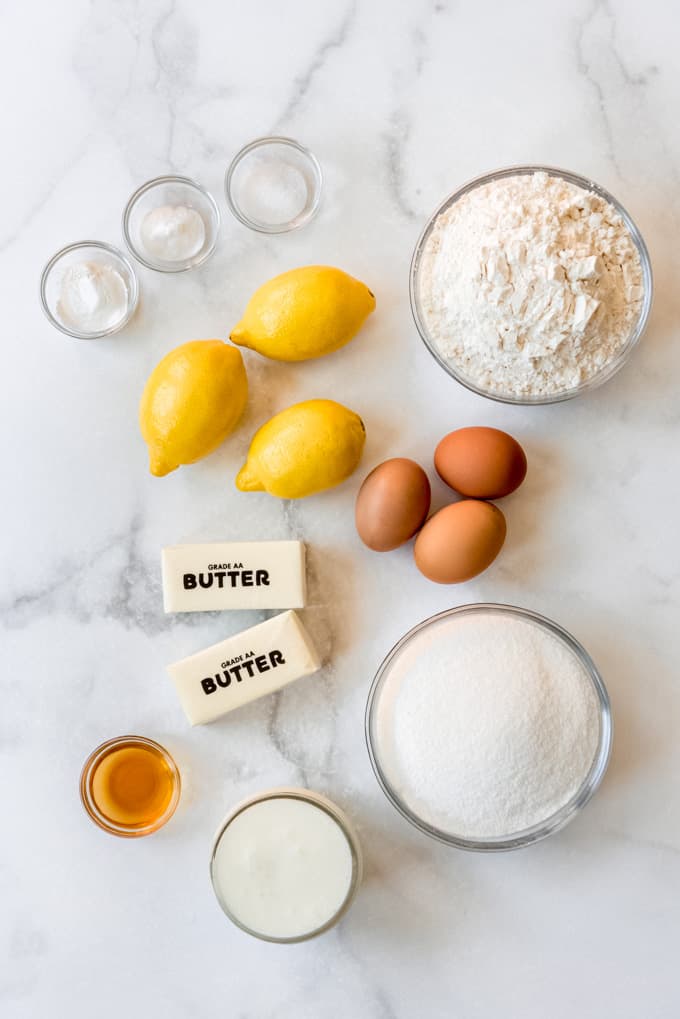
Let’s Make Lemon Cake
- Prep work: Ovens can take a while to preheat so it’s important for an even bake that you preheat the oven for at least 15-20 minutes to 350°F. This will ensure it’s all the way up to temperature before you put your cake pans in. Line two 9-inch cake pans with parchment paper circles in the bottom and spray the sides with baking spray. You can use 6-inch or 8-inch pans and do three layers instead of two, but the bake time will need to be adjusted depending on which approach you take.
- Beat the butter, sugar, and lemon zest: Use a hand mixer or a stand mixer fitted with a paddle attachment to beat the softened butter, sugar, and lemon zest together until creamy and light, about 2 to 3 minutes. Add the eggs, lemon juice, and vanilla extract, scraping the sides of the bowl and mixing until combined. The mixture might look a little curdled or broken, but that’s just fine!
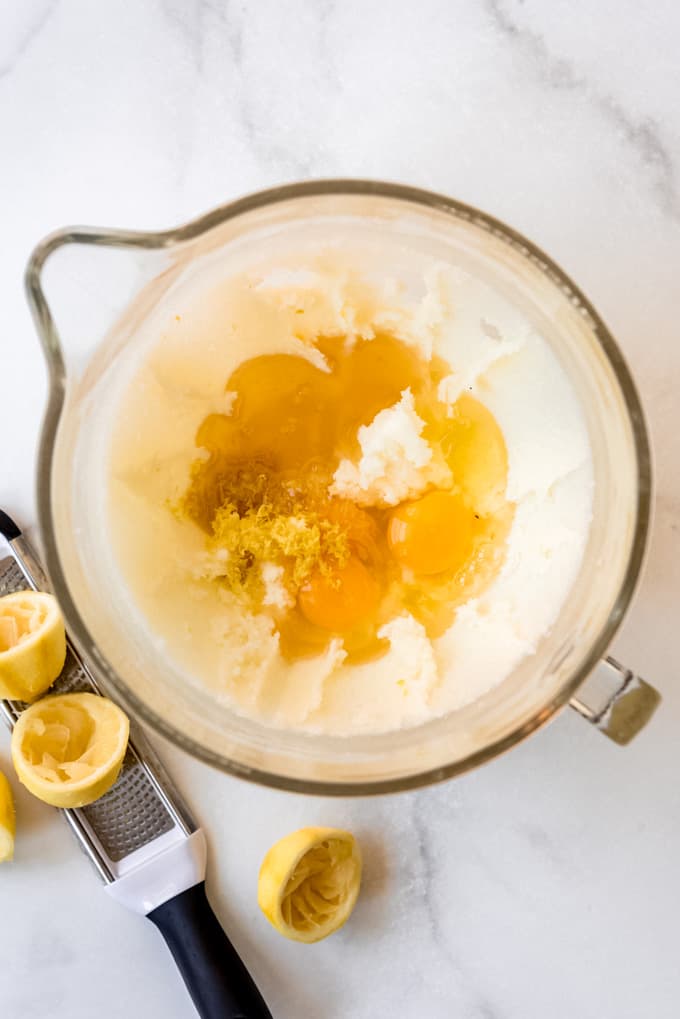
- Alternately add dry ingredients with the buttermilk: Rather than whisking the dry ingredients together, I add the first cup of flour along with the baking powder, baking soda, and salt. Once that is mixed in, add half of the buttermilk, followed by another cup of the flour, the remaining buttermilk, and finishing with the last of the flour. Of course you can always whisk all the dry ingredients together first, but this saves an extra step and bowl to wash while still giving the leavening agents and salt enough mixing to evenly disperse throughout the batter.
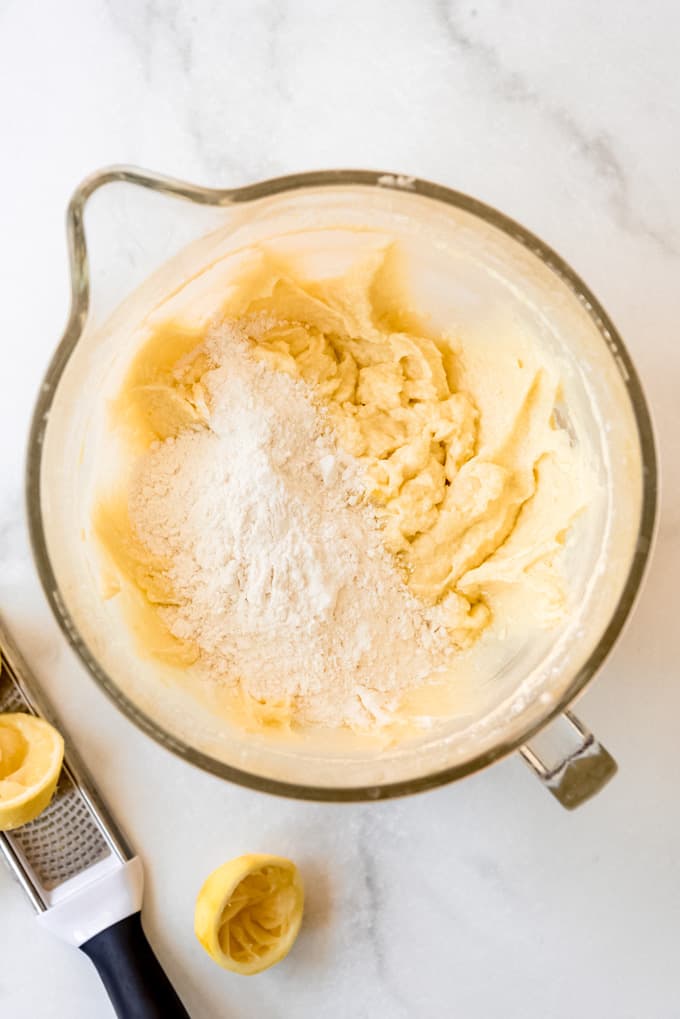
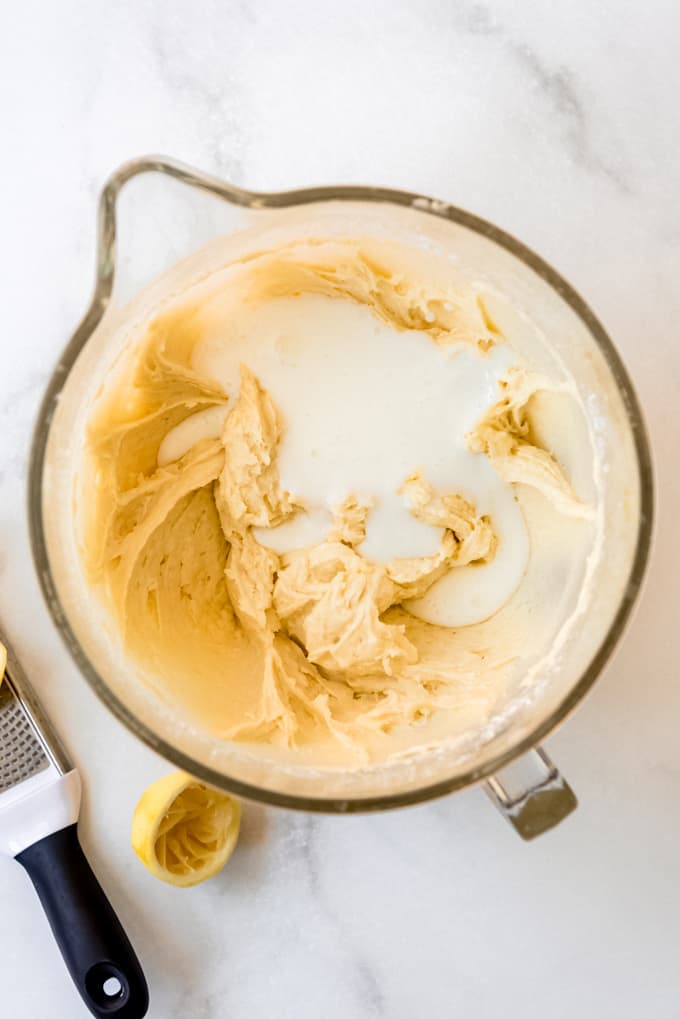
- Pour into pans and bake: Divide the batter evenly between the prepared cake pans. If you are doing two 9-inch layers, it will be 3 cups of batter per pan. Bake the layers for 30-35 minutes until a toothpick inserted into the center of the cakes comes out clean with just a few crumbs clinging to it.
- Cool and level the layers before assembly: This might be common knowledge, but definitely don’t try to frost your cakes until the layers have cooled all the way! Your buttercream frosting will melt right out and the cake won’t be stable! Also, if your cake layers aren’t very flat on top, use a sharp serrated knife to level it off. Rather than trying to cut across the top all at once, I use my knife to slice maybe 1-2 inches all around the cake, turning it quarter turns. Then I use those as my guide to cut all the way across.
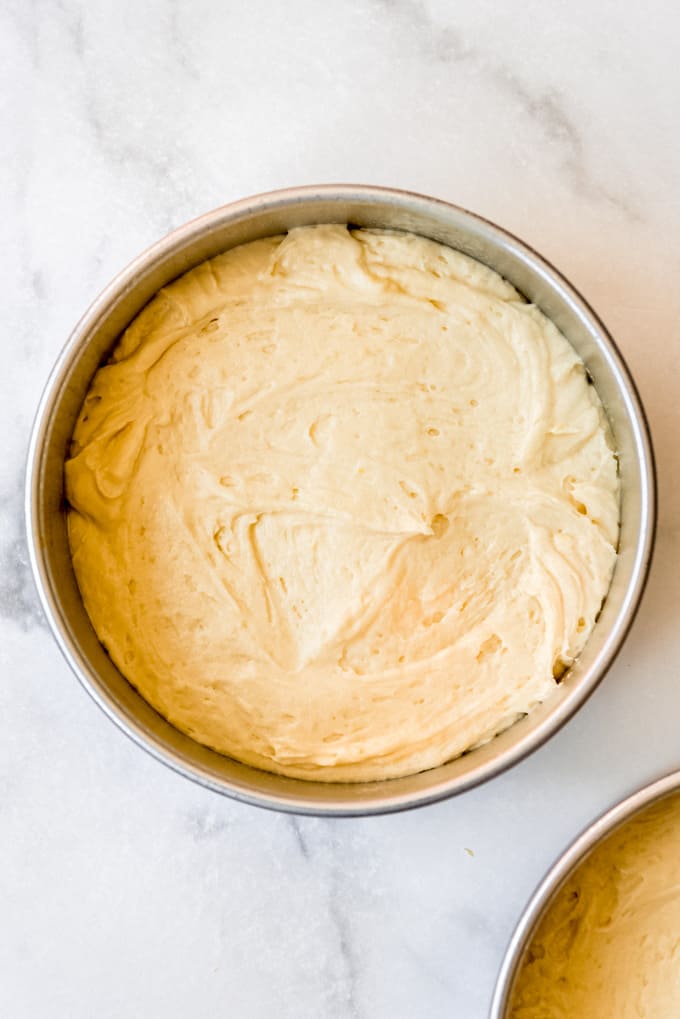
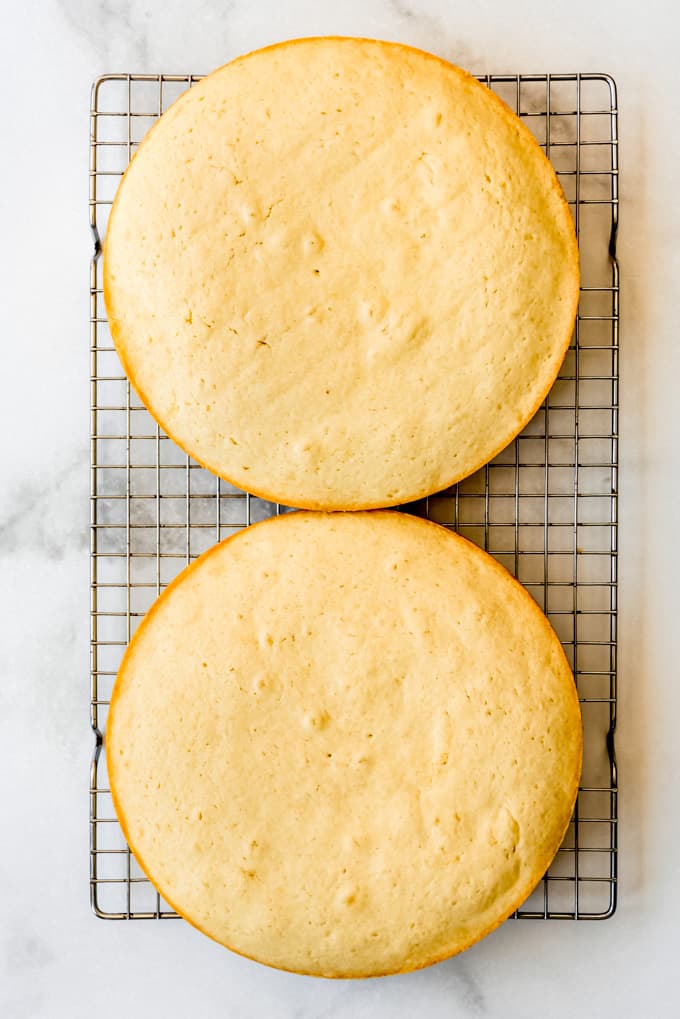
- Make the frosting: In a large bowl, beat the butter using a hand mixer or stand mixer fitted with the paddle attachment until creamy and smooth. Gradually add the powdered sugar along with the lemon zest. Add enough lemon juice and cream to get a nice, spreadable frosting. I like to start with the lemon juice, tasting as I go. If I want it more lemony, I use more of the lemon juice. If I want it creamier, I use more of the cream. Beat for 3 to 4 minutes until creamy and light.
- Decorate: Place one of your cake layers on a cake stand or cake plate, then top with a generous amount of frosting, spreading it out into an even layer. If you want to use lemon curd as a filling, pipe a border of frosting around the top edge of the cake first to act as a dam to hold in the lemon curd so it doesn’t leak out. Place the next layer (or layers if you decide to divide this into 3 or 4 layers) on top, making sure they are centered. Add frosting to the top of the cake and use an offset spatula to spread it evenly around the edges and top of the cake. You can make it really smooth or do swirls for a more relaxed, rustic effect. Feel free to pipe swirls or decorate the top with thin slices of lemon or lemon curd spooned over the top.
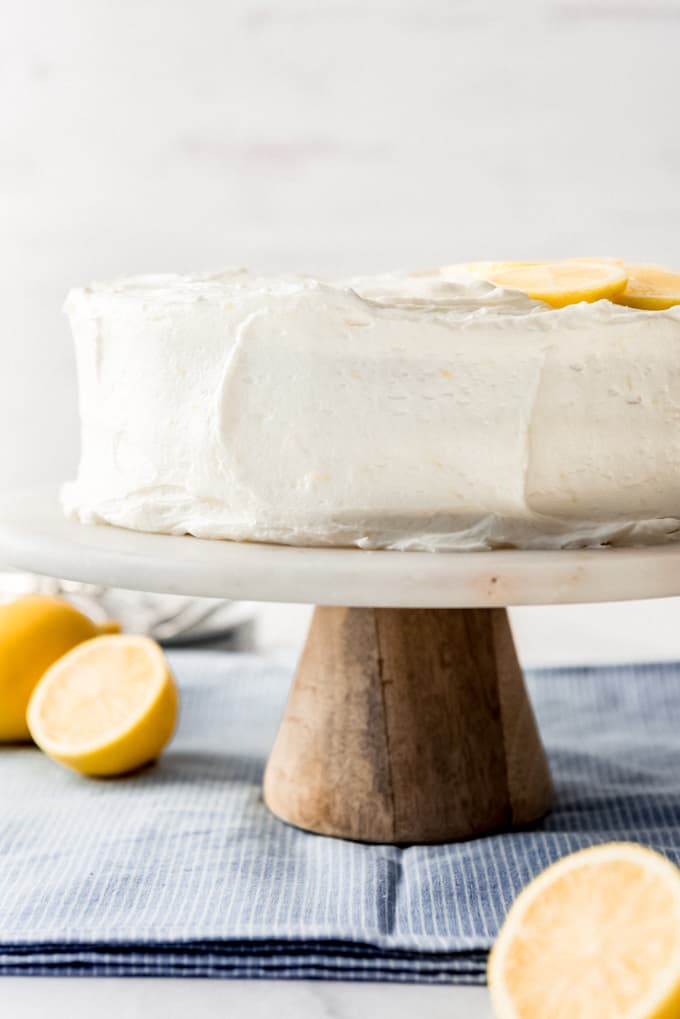
Can I add a lemon syrup to this cake?
Sometimes you want a cake to be EXTRA moist and EXTRA lemony. In those situations, a lemon simple syrup is a great strategy to amplify both of those qualities and it only takes minutes to make.
Simply combine ½ cup of fresh squeezed lemon juice with ½ cup of granulated sugar in a small saucepan over medium-high heat. Stir until boiling and the sugar has completely dissolved, then remove from the heat and let the syrup cool. Brush as much of the syrup as you like over the cake before assembling and frosting. You can even poke holes into the cake with the tines of a fork to make sure the syrup pentetrates through the whole thing.
It’s not a necessary element and this cake is plenty lemony and moist without it, but if you have never tried using a simple syrup before, this cake is a great chance to do so!
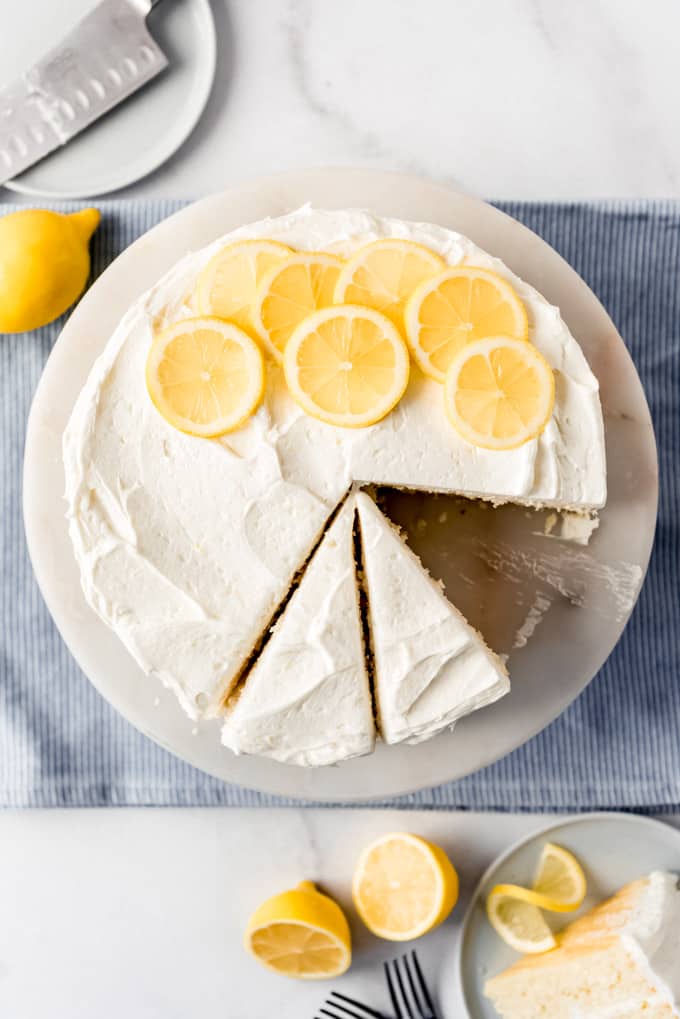

Tips for the Best Lemon Cake
- Measure carefully: The biggest mistake novice bakers make with a cake recipe like this one is mismeasuring the flour. The best approach is to spoon the flour into your measuring cup and level it off with a knife for accuracy. If you scoop and pack the flour in, you can actually add too much which can result in a drier cake.
- Don’t overbake: When people tell me that their cakes turn out dry, 9 times out of 10 it’s because they are overbaked. Sometimes that’s just because some ovens bake hotter (or cooler) than others. An inexpensive oven thermometer that lives in your oven can help you fix this problem. Also, be sure when testing your cake layers to insert a toothpick into the center of each layer. If it comes out wet, you need to bake the cake a little longer. It should come out clean with just a few crumbs sticking to it.
- Level the cake layers: Stacking rounded or uneven cake layers is a recipe for disaster. A long, sharp serrated knife (or even better – a cake leveler) is your friend if you need to even out your cake layers so they have flat, level tops.
How to store leftovers
This cake can be kept overnight on the counter covered in an airtight container. I have a tall glass lid for my cake stand that works perfectly.
If you are keeping it longer than one day, I recommend storing it in the fridge.
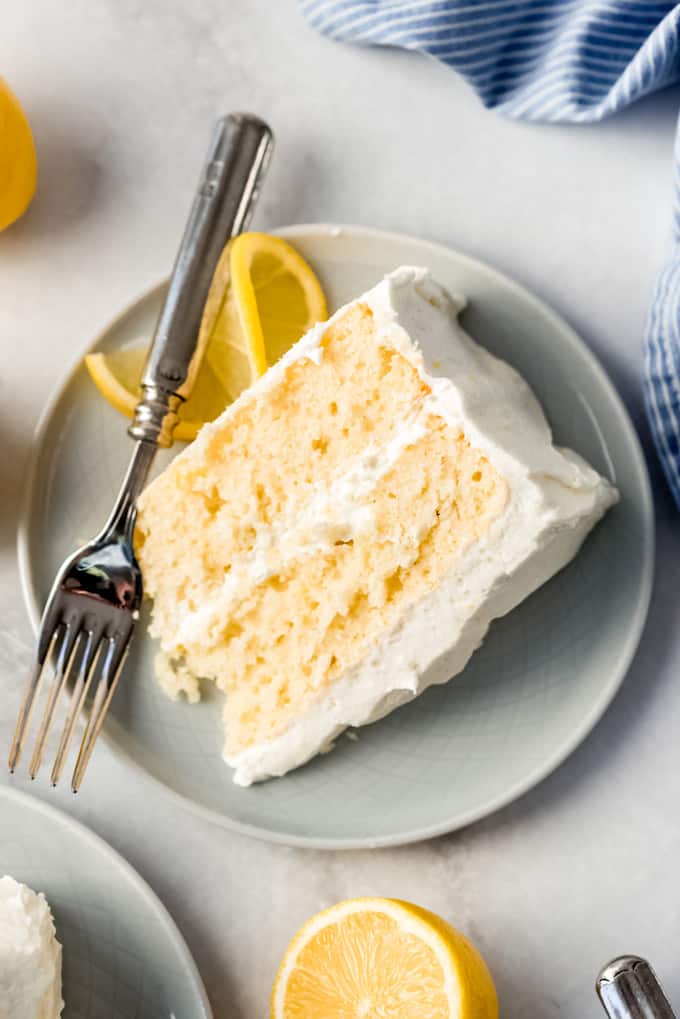
Frequently Asked Questions
Yes, you can make this recipe in a 9×13-inch pan. The bake time will be more between 35 to 40 minutes.
Yes, you sure can! It’s actually based on my lemon cupcakes recipe which I made first. Fill your cupcake liners about 2/3 full and bake for 15-18 minutes. You will get around 24 cupcakes with this full recipe.
This recipe comes out to 6 cups of batter, which can easily be divided between 2-3 pans. I personally prefer two layers made with three cups of batter each, but you could do three layers using two cups of batter per layer and just decrease the baking time instead.
Cakes are great to make in advance because you can freeze the individual layers by letting them cool completely, then wrapping in two layers of plastic wrap and freezing for up to 2 months. Let them thaw, then frost like normal.
You can also freeze the buttercream frosting. Just let it thaw completely on the counter, then beat it again so it’s smooth and spreadable.
Individual slices of cake can be frozen too, as long as they are wrapped well in plastic wrap. Thaw on the counter before eating.
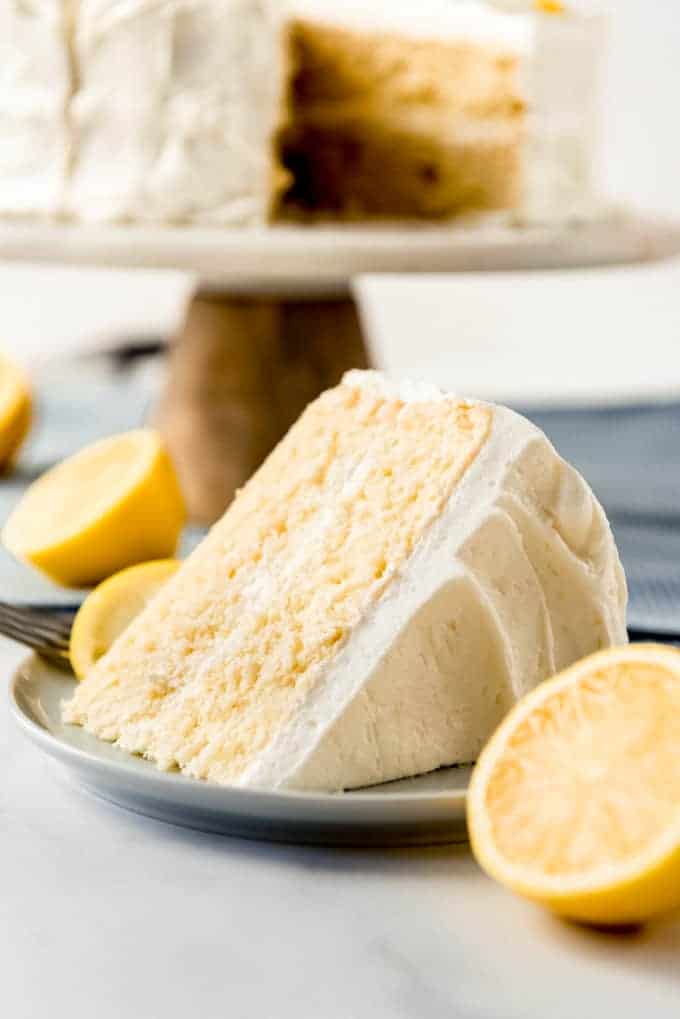
Variations
- Lemon Blueberry Cake: Gently stir in 1 and ½ cups fresh blueberries to the batter. For even more blueberry flavor, spread blueberry jam between the cake layers instead of frosting.
- Lemon Raspberry Cake: Gently stir in 1 and ½ cups fresh raspberries to the batter. For even more raspberry flavor, spread raspberry jam between the cake layers instead of frosting.
- Lemon Rosemary Cake: Add 1 tablespoon of minced fresh rosemary to the batter along with the lemon zest for an herby twist.
- Lemon Simple Syrup: If you would like to brush the layers with a lemon simple syrup, simply combine ½ cup lemon juice and ½ cup sugar in a small saucepan and heat to boiling over medium-high heat. When the sugar has completely dissolved, remove from the heat and let cool completely. Poke holes in the tops of each cake and pour or brush the lemon syrup over each cake layer before assembling and frosting the cake.
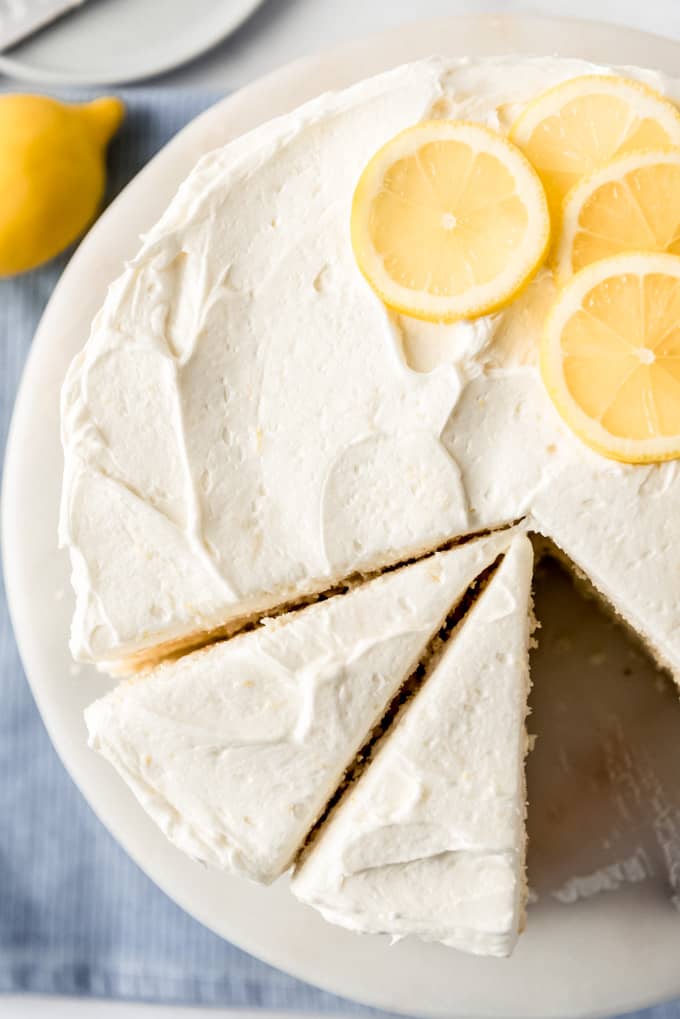
More of My Best Cake Recipes
- The Most Incredible Chocolate Bundt Cake
- Best Carrot Cake Recipe
- Vintage Cherry Chip Layer Cake
- San Jose Burnt Almond Cake
- Kentucky Butter Cake
Did you make this recipe?
Let me know what you thought with a comment and rating below. You can also take a picture and tag me on Instagram @houseofnasheats or share it on the Pinterest pin so I can see.
Lemon Layer Cake
Ingredients
Cake
- 1 3/4 cups granulated sugar
- 2 Tablespoons lemon zest
- 1 cup salted butter room temperature
- 3 large eggs room temperature
- 1/2 cup fresh lemon juice
- 2 teaspoons vanilla extract
- 3 cups all-purpose flour
- 3 teaspoons baking powder
- 1/2 teaspoon baking soda
- 1 teaspoon salt
- 1 cup buttermilk room temperature
Frosting
- 1 1/2 cups salted butter room temperature
- 6 cups powdered sugar
- 2-3 Tablespoons heavy cream
- 2-3 Tablespoons fresh lemon juice
- 1 Tablespoon lemon zest
Garnish
- thin slices of lemon
Instructions
Cake
- Preheat oven to 350°F. Line two 9-inch round cake pans with parchment paper circles and spray with baking spray.
- In a large bowl, beat the butter, sugar, and lemon zest until creamy and light, about 2 to 3 minutes.1 ¾ cups granulated sugar, 1 cup salted butter, 2 Tablespoons lemon zest
- Add eggs, lemon juice, and vanilla extract, scraping the sides of the bowl and mixing until combined.3 large eggs, ½ cup fresh lemon juice, 2 teaspoons vanilla extract
- Add the flour, baking powder, baking soda, and salt alternately with the buttermilk in 2-3 additions, mixing between each addition to combine.3 cups all-purpose flour, 3 teaspoons baking powder, ½ teaspoon baking soda, 1 teaspoon salt, 1 cup buttermilk
- Divide the batter evenly between the prepared cake pans. Bake for 30-35 minutes until a toothpick inserted into the center of the cakes comes out clean with just a few crumbs clinging to it.
- Cool completely before leveling the tops of the cakes and decorating with lemon buttercream frosting.thin slices of lemon
Frosting
- Beat the butter until creamy and smooth using a hand mixer or a stand mixer fitted with the whisk attachment.1 ½ cups salted butter
- Gradually add the powdered sugar along with the lemon zest. Add enough heavy cream and lemon juice to get and nice, spreadable frosting. Beat for 3 to 4 minutes until creamy and light.6 cups powdered sugar, 2-3 Tablespoons heavy cream, 2-3 Tablespoons fresh lemon juice, 1 Tablespoon lemon zest
Notes
- Lemon Simple Syrup: If you would like to brush the layers with a lemon simple syrup, simply combine ½ cup lemon juice and ½ cup sugar in a small saucepan and heat to boiling over medium-high heat. When the sugar has completely dissolved, remove from the heat and let cool completely. Brush over each cake layer before assembling and frosting the cake.
- Lemon Curd: If you want to fill your cake with something other than just frosting, my lemon curd recipe is a fantastic choice!
- Variations: Lemon pairs really well with other fruit flavors like blueberry or raspberry. You can add 1 and ½ cups of fresh fruit to the batter for a delightful twist on classic lemon cake.
- Freezing: The cooled cake layers can be wrapped and frozen for up to 2 months. Thaw completely before frosting. If needed, you can freeze individual cake slices wrapped in plastic wrap.
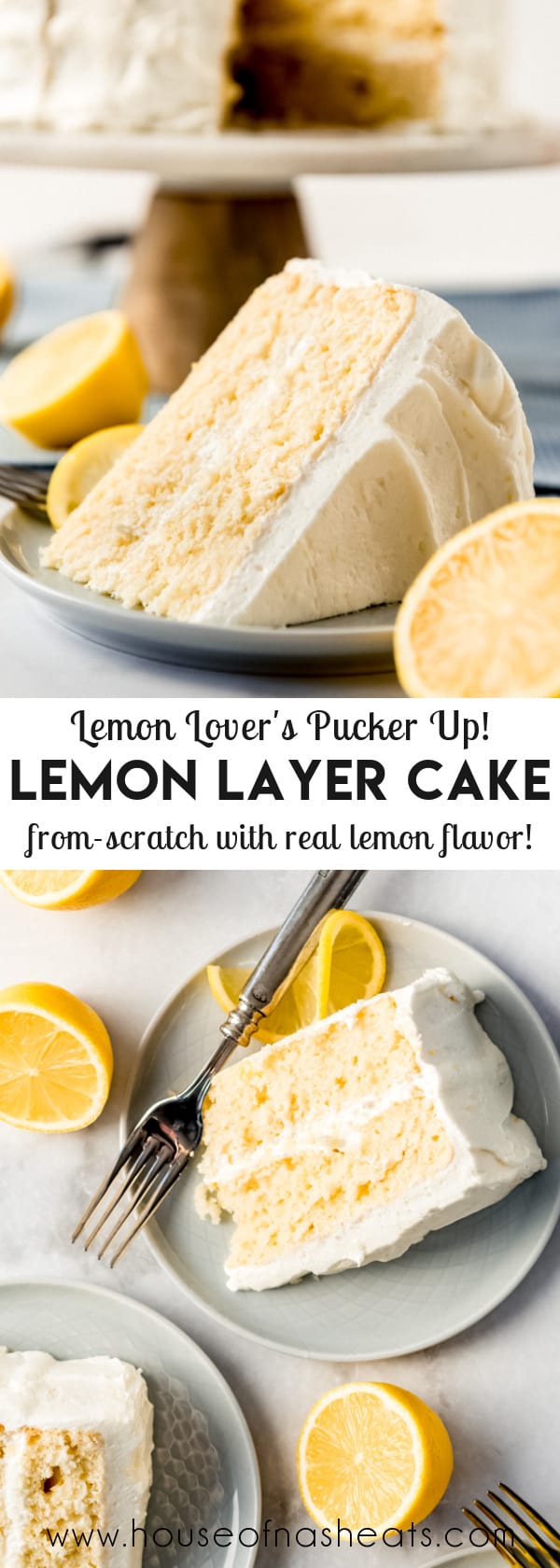
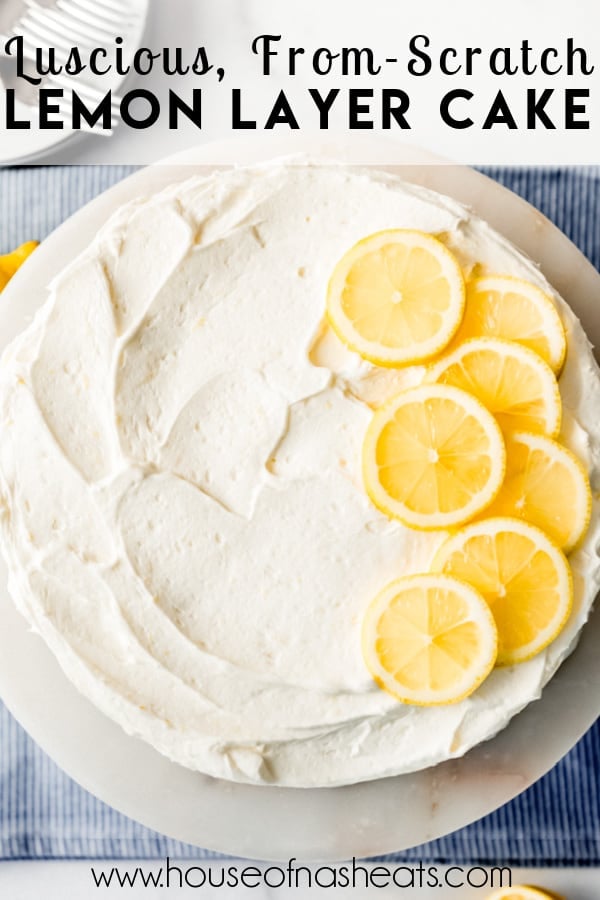
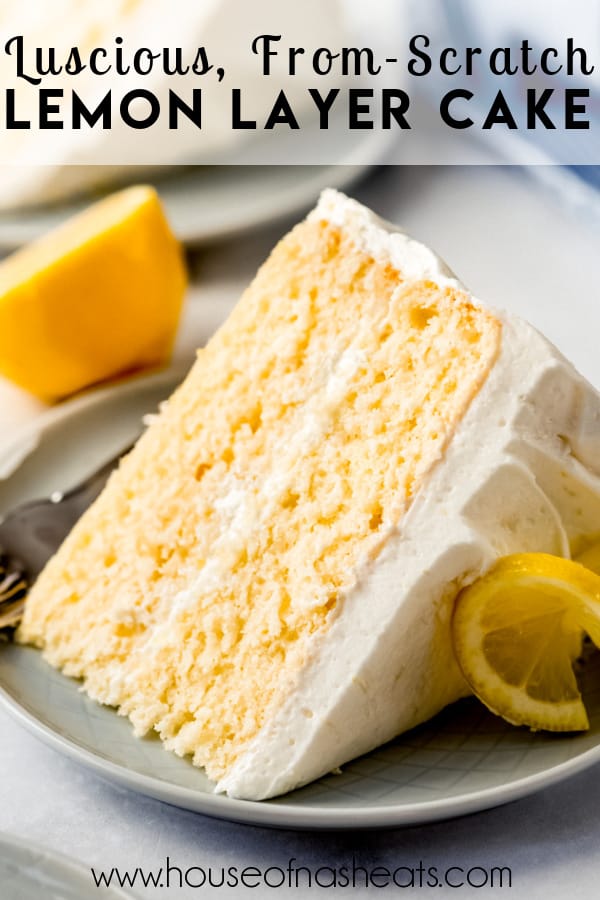
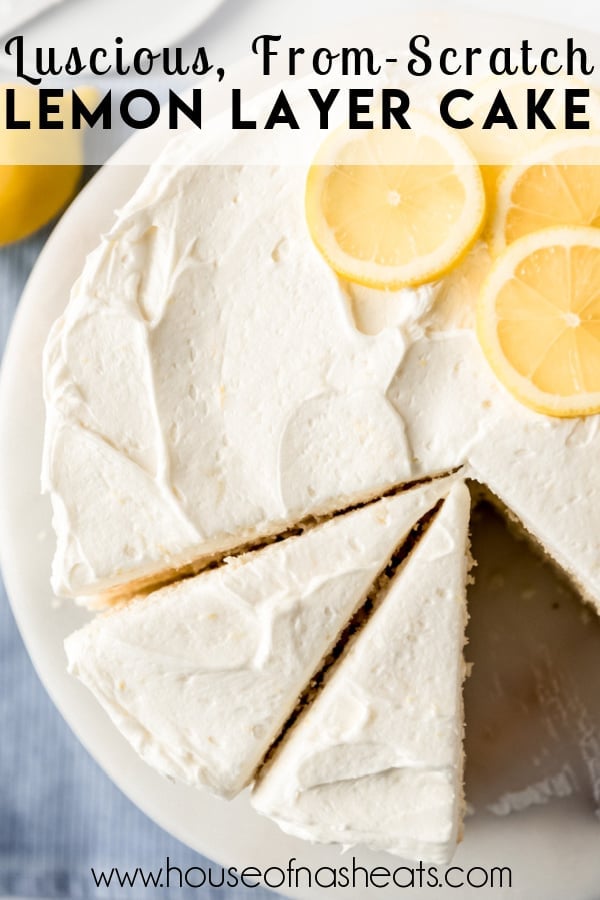
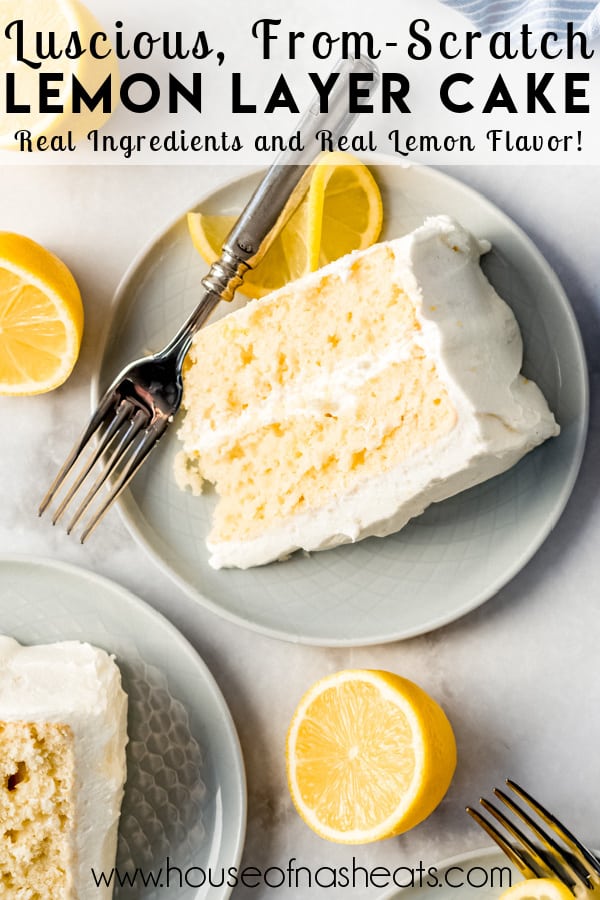
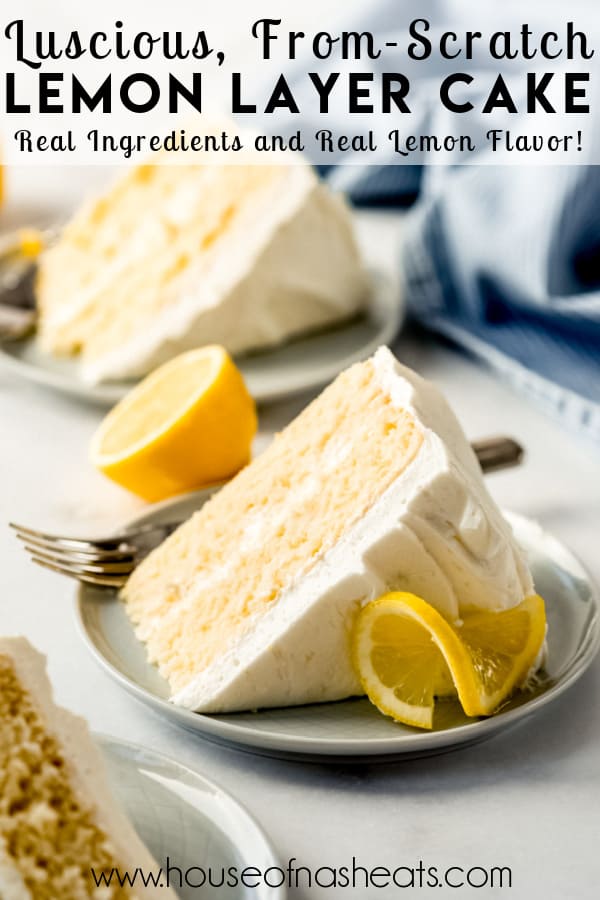
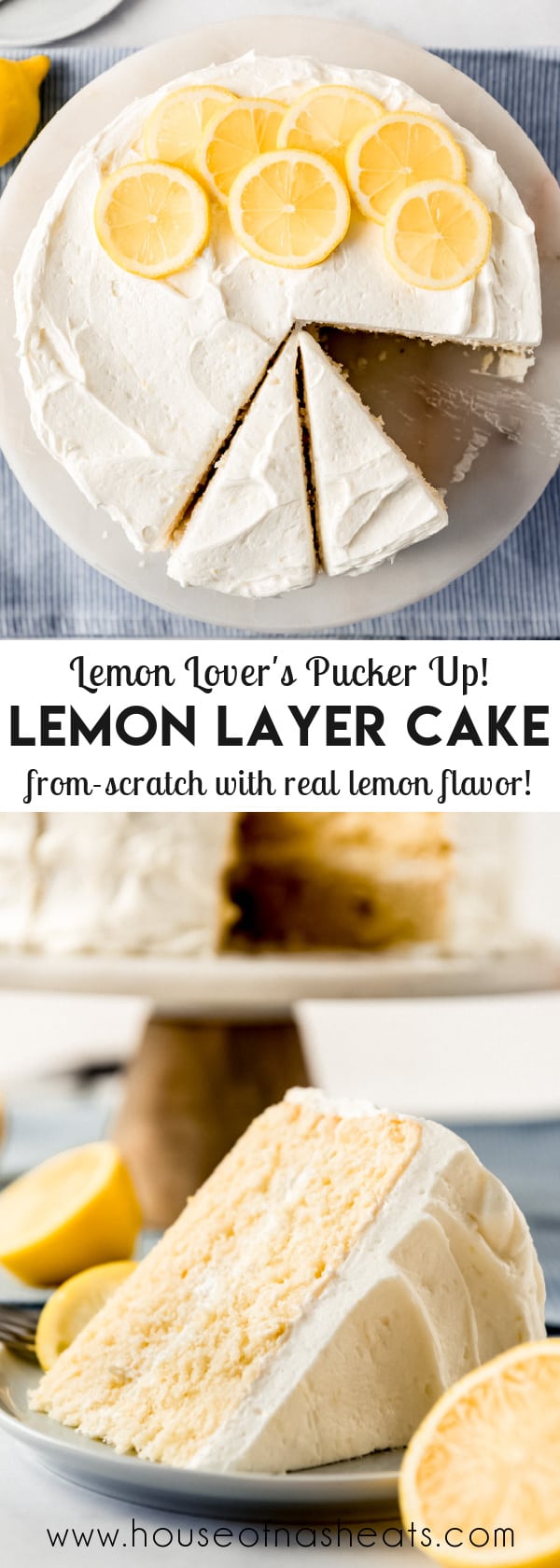
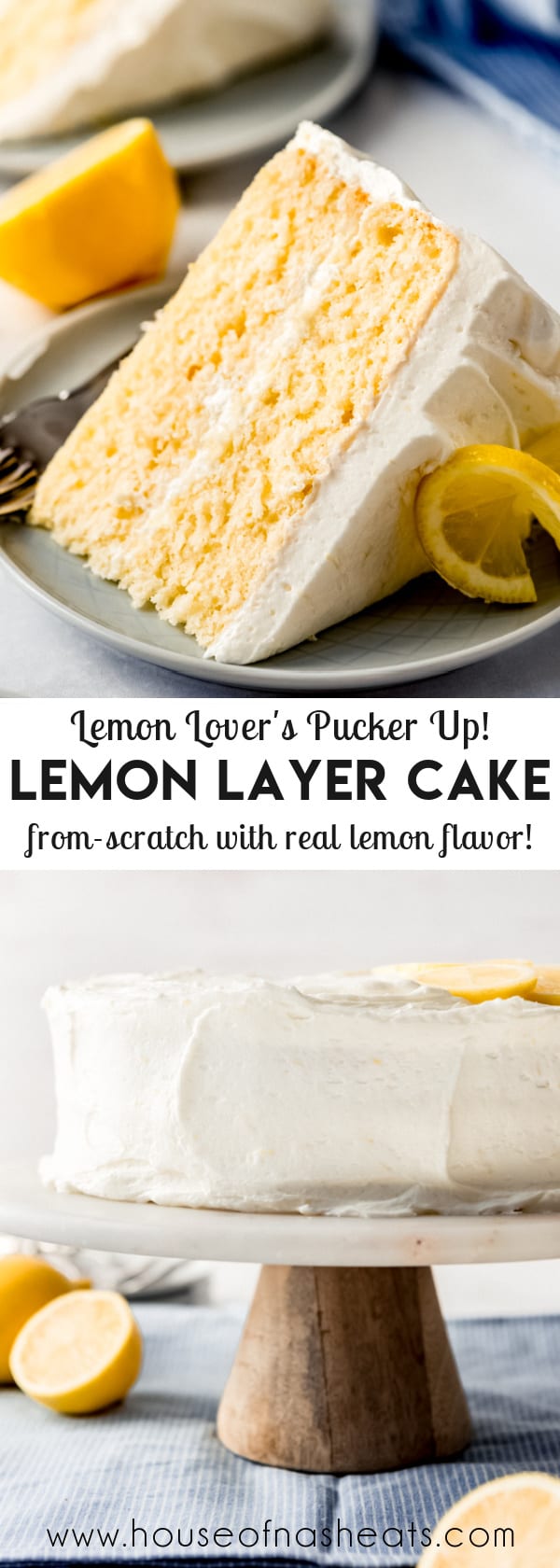
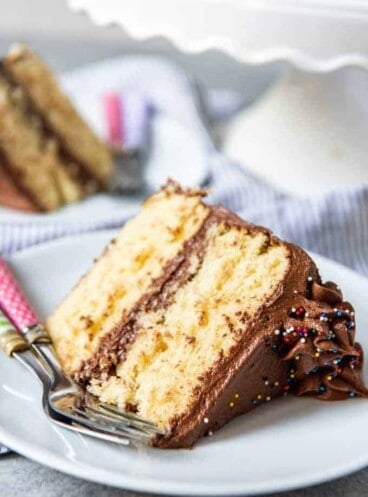
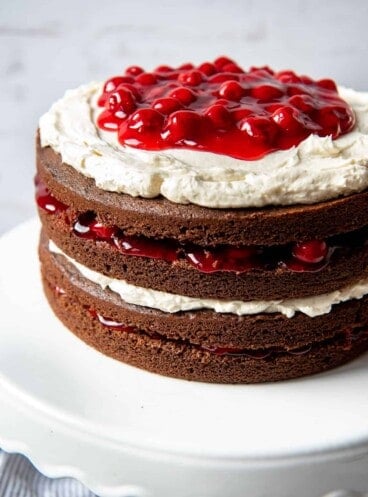
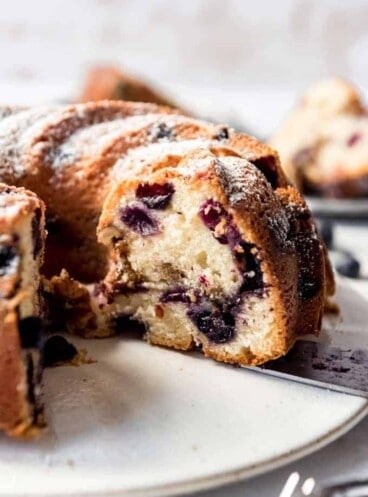

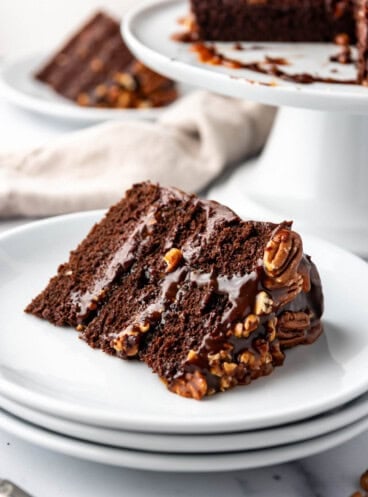
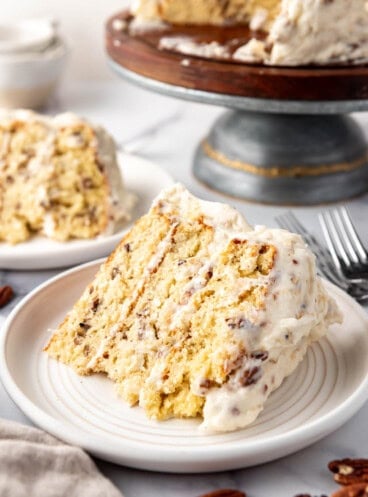
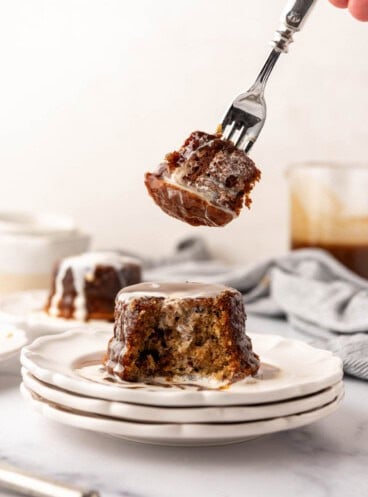
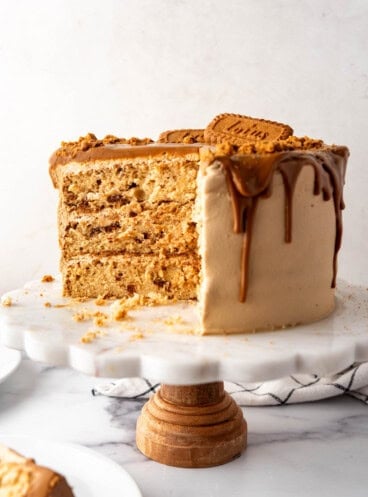

Question: what can I substitute for the heavy cream?
If you don’t have heavy cream for the frosting you could just use regular milk or coconut milk.
Can I use cake flour instead of all purpose flour in this recipe?
Yes, you can.
Can you use unsalted butter and the flavor of the cake still be good?
Absolutely! A stick of salted butter just has about 1/4 teaspoon of salt, so you can adjust this recipe for unsalted butter by adding an extra 1/2 teaspoon of salt.
How much cake flour to use and any other adjustments?
Hi! Both of these flours can be used interchangeably, for the most part but to best substitute cake flour for all-purpose flour use 1 cup plus 2 tablespoons cake flour for every cup of all-purpose flour.
Do you have a lemon filling recipe To use for in between the layers instead of using frosting
You could use my Easy Homemade Lemon Curd recipe! It’s not as thick as a frosting and you would want to pipe a border of frosting around the top of each cake before filling with lemon curd, but it would work well!
How many cups of batter does this recipe produce?
It should make about 6 cups of batter.
Hi could you tell me the measurements for oil instead of butter for the cake batter please?
Yes, I would use 3/4 cup of oil and would use canola oil because it has a mild flavor.
I want to make this recipe into a three layer 6 inch cake. Do you have suggestions on oven temperature and bake time?
Just keep it at the same oven temperature of 350 F and decrease the bake time a little bit so I would say start with 20-25 minutes and check to see how they are doing at the 20 minute mark.
Hello! I’ve made several of your recipes with excellent success. Especially your German Plum Cake!!! I digress. I tried making this cake tonight to the letter except I used dry buttermilk instead of wet and added the water to it as indicated on the can. The cook time was very long and it had a loaf like consistency??? Have you ever used dry buttermilk? Any tips??